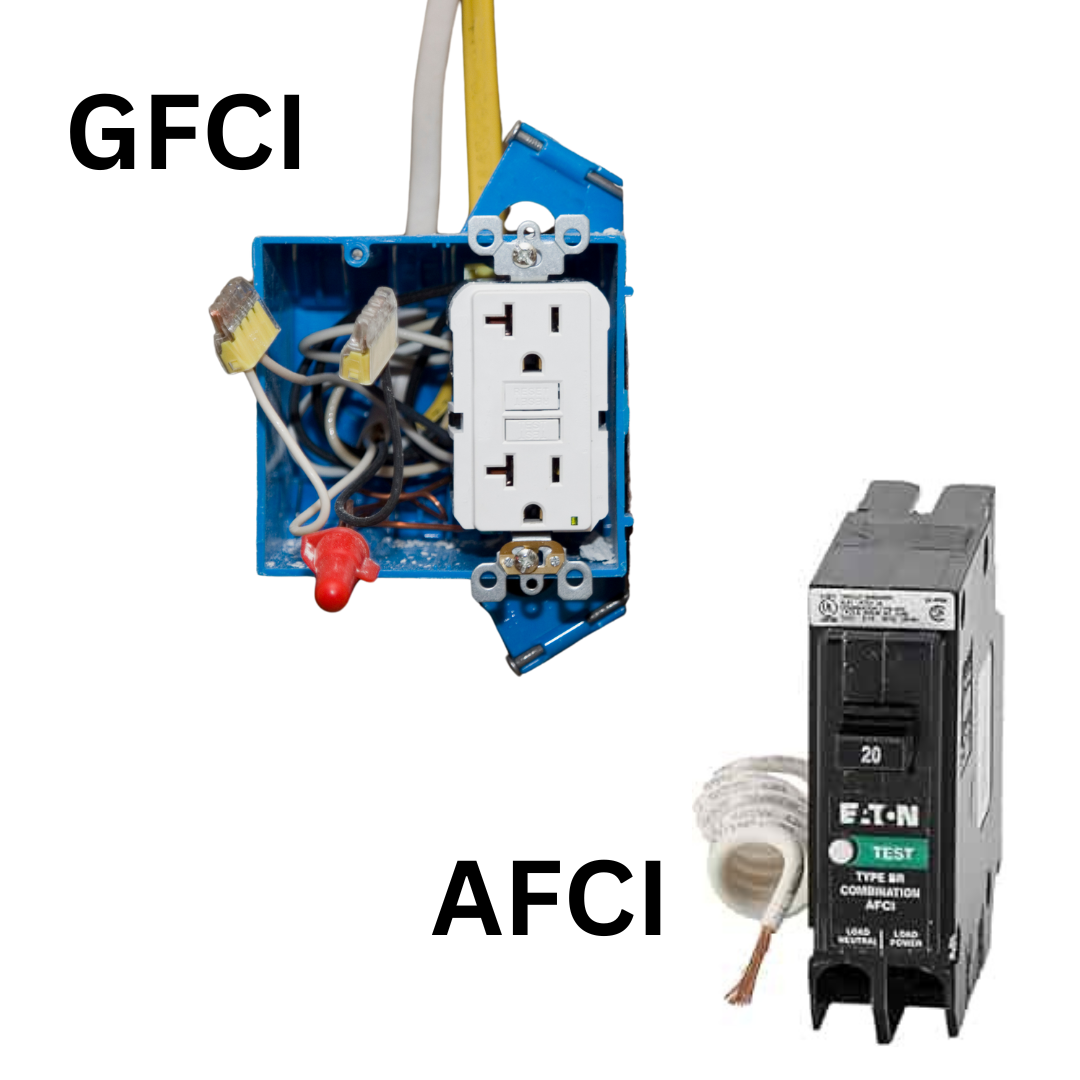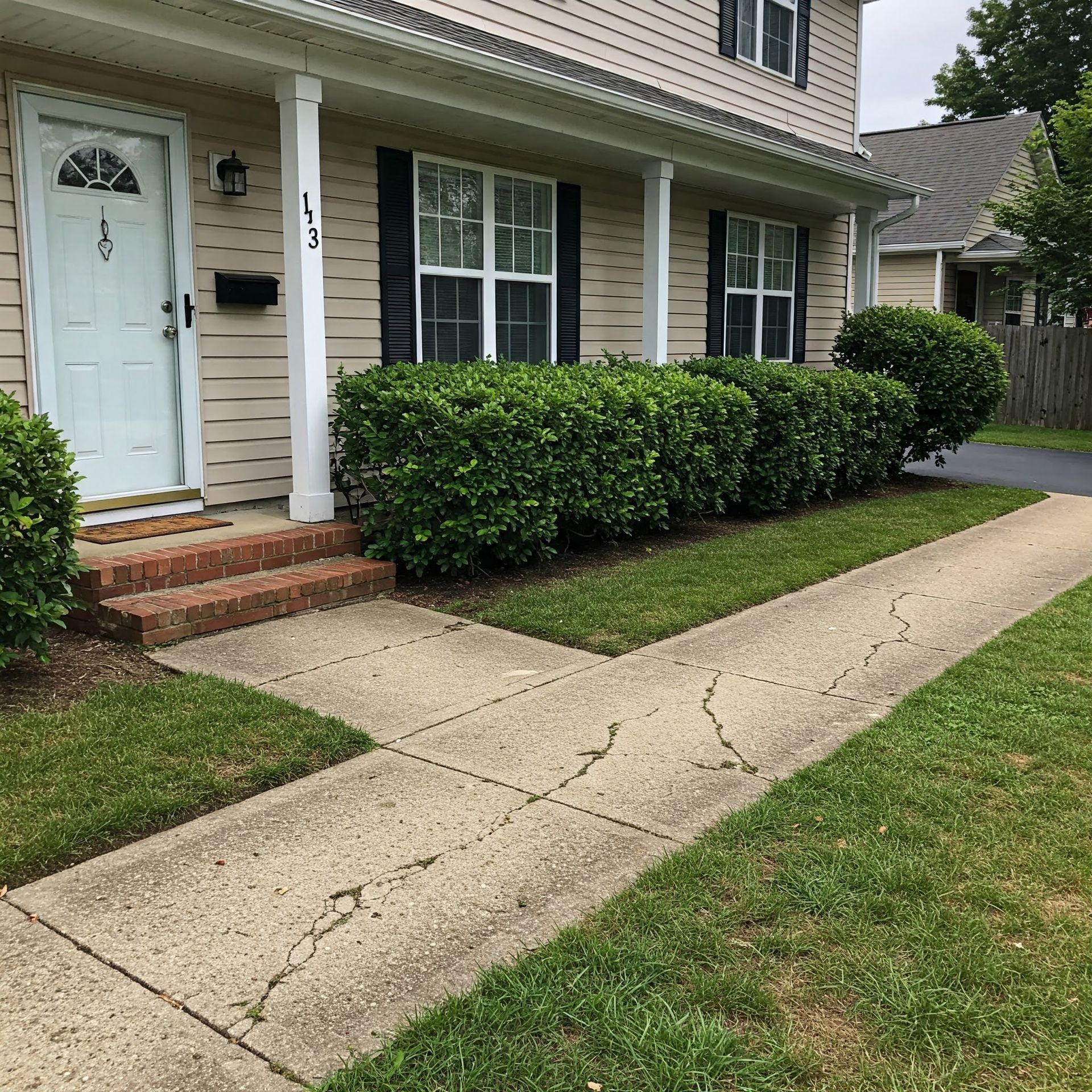AFCIs and GFCIs Made Simple: What Every Homeowner Should Know
5-Minute Read
AFCIs and GFCIs Made Simple: What Every Homeowner Should Know
If you’ve ever looked at your home’s electrical panel or outlets and wondered what those “TEST” and “RESET” buttons mean, you’re not alone. AFCIs and GFCIs might sound complicated, but they’re actually two of the most important safety features in your home. Let’s break it down in simple terms so you can understand what they do, why they’re important, and how home inspectors make sure they’re working.

What Are AFCIs and GFCIs?
Think of AFCIs and GFCIs as your home’s built-in safety net for electrical problems.
- AFCI (Arc-Fault Circuit Interrupter):
AFCIs are like the smoke detectors of your electrical system. They prevent fires by detecting dangerous sparks or “arcs” in wiring and shutting off the power before it becomes a problem.
- GFCI (Ground-Fault Circuit Interrupter):
GFCIs protect you from getting shocked, especially in wet areas like bathrooms and kitchens. If something goes wrong—like water getting into an outlet—GFCIs cut the power in a split second.
Where Do You Find Them?
- GFCIs: These are usually the outlets with two buttons labeled “TEST” and “RESET.” You’ll find them in places where water and electricity might mix, like:
- Bathrooms
- Kitchens
- Garages
- Outdoor areas
- AFCIs: These are found in your home’s electrical panel as special circuit breakers with a “TEST” button. They protect entire sections of your home’s wiring, like bedrooms or living rooms.
How Do Inspectors Check Them?
Here’s what we do to make sure your AFCIs and GFCIs are working:
For GFCIs:
- Press the RESET button to turn the outlet back on.
- Plug in a small device, like a lamp, and turn it on.
- Press the TEST button. The lamp should turn off immediately.
- Press RESET again to restore power.
For AFCIs:
- Locate the AFCI breaker in the electrical panel.
- Press the TEST button while lights or devices on the circuit are on.
- The breaker should trip, shutting off power to that circuit.
If either device doesn’t work as expected, it’s time to have an electrician take a look.
Why Do You Need AFCIs and GFCIs?
Without these safety devices, you’re taking unnecessary risks with your home and family.
- AFCIs Prevent Fires: Electrical fires often start from faulty wiring, damaged cords, or loose connections. AFCIs detect these sparks and stop them in their tracks.
- GFCIs Prevent Shocks: If water gets into an outlet or an appliance malfunctions, GFCIs shut off the power instantly, reducing the chance of serious injury or even death.

How Often Should You Test Them?
AFCIs and GFCIs don’t last forever. To make sure they’re doing their job:
- Test them once a month using the “TEST” button.
- If they don’t trip or reset properly, call an electrician to replace them.
Can You Have Both in the Same Spot?
Yes! Some outlets and breakers combine both AFCI and GFCI protection in one device. These are great for areas like kitchens or laundry rooms, where both fire and shock risks are higher.
What Happens If You Don’t Have Them?
Homes without AFCIs or GFCIs are at a much higher risk for:
- Electrical fires caused by arcing.
- Electric shocks in wet areas like bathrooms or kitchens.
If your home is older, it might not have these devices installed yet. Updating your system to include them is an investment in safety and peace of mind.
Let’s Keep It Simple
AFCIs and GFCIs are like your home’s electrical superheroes—they’re always on guard, ready to stop fires or shocks before they happen. And while they might seem technical, testing them is simple, and keeping them in good shape is one of the easiest ways to protect your home.
FAQ's
What’s the difference between a GFCI and a regular outlet?
GFCIs have “TEST” and “RESET” buttons and are designed to shut off power when there’s a ground fault, protecting you from shocks. Regular outlets don’t have this safety feature.
Can I install AFCIs or GFCIs myself?
It’s always best to hire a licensed electrician to ensure proper installation and safety.
Are AFCIs and GFCIs required in all homes?
Newer homes are required to have them in certain areas, but older homes may not. Updating your home with these devices is highly recommended for safety.






